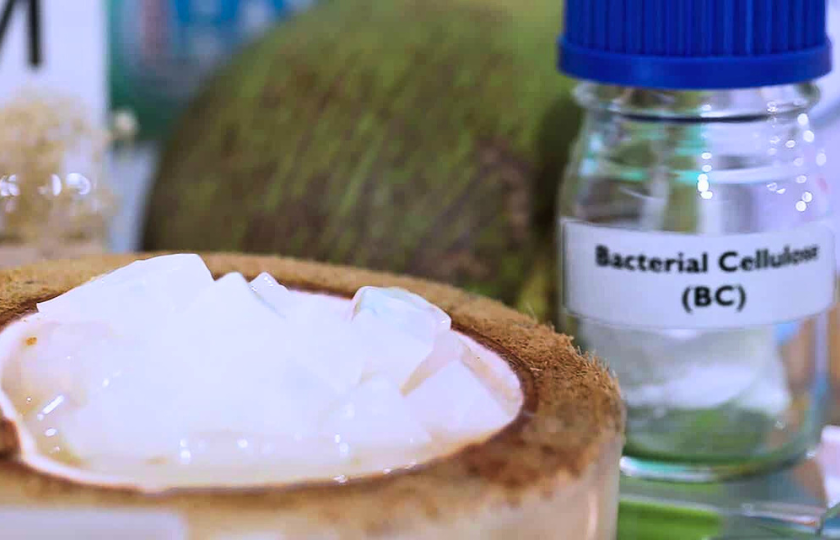Food manufacturers can now repurpose leftover coconut jelly scraps into functional food additives.
Thanks to the innovation developed by Prof Dr Hathaikarn Manuspiya from the Petroleum and Petrochemical College at Chulalongkorn University, Thailand has found a way to tackle food waste and promote a circular economy.
This collaboration between Chula researchers and companies like Ampol Food Processing effectively repurposes coconut jelly bio waste into valuable food ingredients, reducing the need for costly imports.
The residual jelly scraps, typically discarded as waste from the coconut jelly production process, are ingeniously transformed into food, medicine, and cosmetics additives.
“The additives are high in purity and safe,” said Prof Hathaikarn. “Given their market demand, Cello-gum is a good example of innovation with enormous potential for industrial development.”
What exactly is Cello-gum?
Cello-gum is a nanocellulose product derived from coconut jelly, using raw materials abundant in Thailand. Beyond addressing the issue of food waste through circular economy principles, Cello-gum also has the potential to enhance the value of waste generated in the food production process.
Coconut jelly, or Nata de Coco, is a natural material whose scientific structure is bacterial cellulose, or BC. It possesses exceptional qualities such as strong mechanical properties, high porosity, and substantial water absorption capacity. It is easily moldable, biodegradable, and non-toxic.
“When used as a composite material or additive, coconut jelly enhances properties, such as ensuring good adhesion of other substances, and has various applications,” explains Prof Hathaikarn.
Why coconut jelly shines as an ideal additive
The bacterium responsible for producing coconut jelly is Acetobacter xylinum. It can be cultured in a lab and fed sugar and carbon sources, with “coconut water” serving as nourishment. When fed, the bacteria excrete fibre, which is a good type of cellulose.
Prof Hathaikarn underscores the superior qualities of Cello-gum, noting its purity, efficiency, and economic benefits compared to imported additives.
“Unlike wood or other plants like bagasse or cassava, which yield only about 30 per cent cellulose, coconut jelly provides more cellulose content. The production process can also incorporate bagasse, corn, and pineapple, albeit with potential alterations or additions,” she added.
The future of Cello-gum
The future of Cello-gum looks promising, aside from being a finalist in the 2020 Rising Stars Project and securing the top spot in the Angel Fund.
With many agricultural wastes containing cellulose, the possibilities for Cello-gum are endless. The research team is confident that this success will set a precedent for circular economy development, aiming to increase the value of waste generated by the food and agricultural industries.



